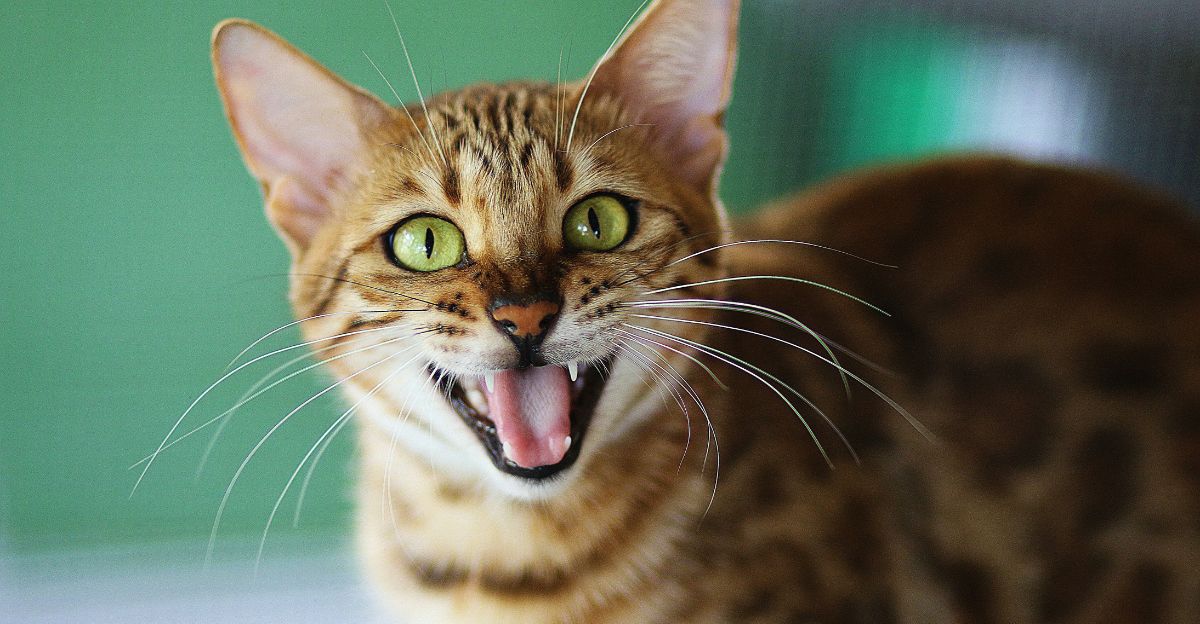When Do Cats Lose Their Baby Teeth? The Ultimate Kitten Teething & Dental Care Guide

Bringing home a new kitten is full of adorable surprises—tiny paws, playful pounces, and...little teeth marks on your favorite sneakers? If your kitten seems extra bitey, they might be entering a natural (and slightly uncomfortable) phase: teething.
So, when do cats lose their baby teeth? How do you know your kitten is teething, and what can you do to help?
In this guide, we’ll walk through:
● The full kitten dental development timeline
● Common kitten teething symptoms
● Tips for kitten dental care
● Red flags to watch for
● And easy steps to support your kitten’s cat oral hygiene
Let’s get your little furball smiling—pain-free!
🦷 Kitten Teeth Timeline: From Gummy Grins to Sharp Chompers
Just like humans, kittens go through a two-stage dental development process.
👶 Stage 1: Baby Teeth (Deciduous Teeth)
Kittens are born without teeth, but things move fast:
● 2–4 weeks: Tiny incisors (front teeth) emerge.
● 3–4 weeks: The small but mighty canines (fangs) make an appearance.
● 4–6 weeks: Premolars erupt, completing the set.
● 6–8 weeks: By two months old, most kittens have 26 baby teeth.
These baby teeth are sharp but temporary—designed for early chewing, not lifetime use.
🧑 Stage 2: Adult Teeth Take Over
Here’s when the transformation begins:
● 3–4 months: The teething phase starts. Incisors are usually the first to fall out.
● 4–5 months: Canines and premolars begin to shed and get replaced.
● 5–7 months: By 6 to 7 months, your kitten should have a full set of 30 adult teeth.
So, if you’re wondering "When do cats lose their baby teeth?"—it’s usually between 3 to 6 months of age.
😿 Common Kitten Teething Symptoms to Watch
Not every kitten will show obvious signs, but many experience mild discomfort while teething.
Here are the most common kitten teething symptoms:
● Pawing at their mouth or rubbing their face
● Drooling (yep, kittens can drool too!)
● Reluctance to eat crunchy kibble or dropping food
● Bad breath (often called "kitten breath")
● Increased chewing on toys, furniture—or your fingers
Teething doesn’t typically require medication, but knowing what to expect can make life easier (and less bite-prone) for everyone.
🧸 Kitten Dental Care: How to Help Your Teething Kitten
Think of this stage as a training ground for lifelong cat oral hygiene habits.
Here are some simple ways to support your kitten’s teething journey:
1. Offer Soothing Chew Toys
Give them soft, flexible chew toys specifically made for kittens. Bonus tip: Chill a damp washcloth in the freezer—many kittens love the cooling relief.
2. Adjust Their Diet
Dry food can be tough on sore gums. Temporarily switching to wet food or mixing in broth can help them eat comfortably.
3. Start a Brushing Routine Early
Now’s the perfect time to gently introduce brushing. Use a soft finger brush and cat-safe toothpaste. Don't worry about doing a perfect job—just get them used to the idea.
Want to keep your kitten’s smile healthy long-term? Consistency is key when it comes to kitten dental care.
🚨 When Teething Becomes a Problem: Time to Call the Vet
Teething is usually smooth, but some situations need veterinary help. Don’t ignore these warning signs:
🦷 Persistent Baby Teeth
Sometimes a baby tooth doesn’t fall out even after the adult tooth grows in. This is called a retained or persistent deciduous tooth. It’s most common with the canines and incisors.
Left untreated, this can cause:
● Overcrowding and misalignment
● Gum inflammation
● Plaque and tartar buildup
● Pain and abnormal bites (malocclusion)
🛠️ Treatment: Quick and Painless
Vets usually recommend removing persistent teeth to prevent long-term problems. It’s a routine procedure done under anesthesia. The sooner it’s caught, the better!
🧐 Pro Tip: Weekly Mouth Checks
Get into the habit of gently inspecting your kitten’s mouth each week. Look for doubled-up teeth, swelling, or signs of discomfort. Regular checks can catch issues before they turn serious.
🪥 The Importance of Lifelong Cat Oral Hygiene
Once teething is over, don’t abandon your kitten’s dental care! Poor dental hygiene is one of the most overlooked causes of illness in adult cats.
Why it matters:
● Plaque can turn into tartar
● Tartar leads to gingivitis
● Gingivitis progresses to periodontal disease
The best defense? Routine brushing, dental treats, and annual vet dental exams. Building a solid routine early sets your kitten up for lifelong health.
🙋 Frequently Asked Questions
❓ Can I see my kitten’s baby teeth when they fall out?
Sometimes! But most kittens swallow their baby teeth while eating or playing—it’s totally normal.
❓ What if my kitten’s breath smells really bad?
Mild bad breath (a.k.a. "kitten breath") is common during teething. However, strong or persistent odor could signal infection or dental disease. Always consult your vet if you're unsure.
❓ How can I make brushing less stressful for my kitten?
Start slow and make it positive. Let them lick the toothpaste, and only brush for a few seconds at a time. Treats and praise go a long way!
🐱 Final Thoughts: Growing Pains and Happy Smiles
Watching your kitten grow is an exciting time—and yes, a few nibbles and teething tantrums are part of the package. Now that you know when cats lose their baby teeth, how to spot kitten teething symptoms, and support good kitten dental care, you're set up for success.
Remember: A little TLC now = a lifetime of healthy purrs and happy smiles.
Have a question about your kitten's teeth? Drop it in the comments below—we’re always happy to help!


